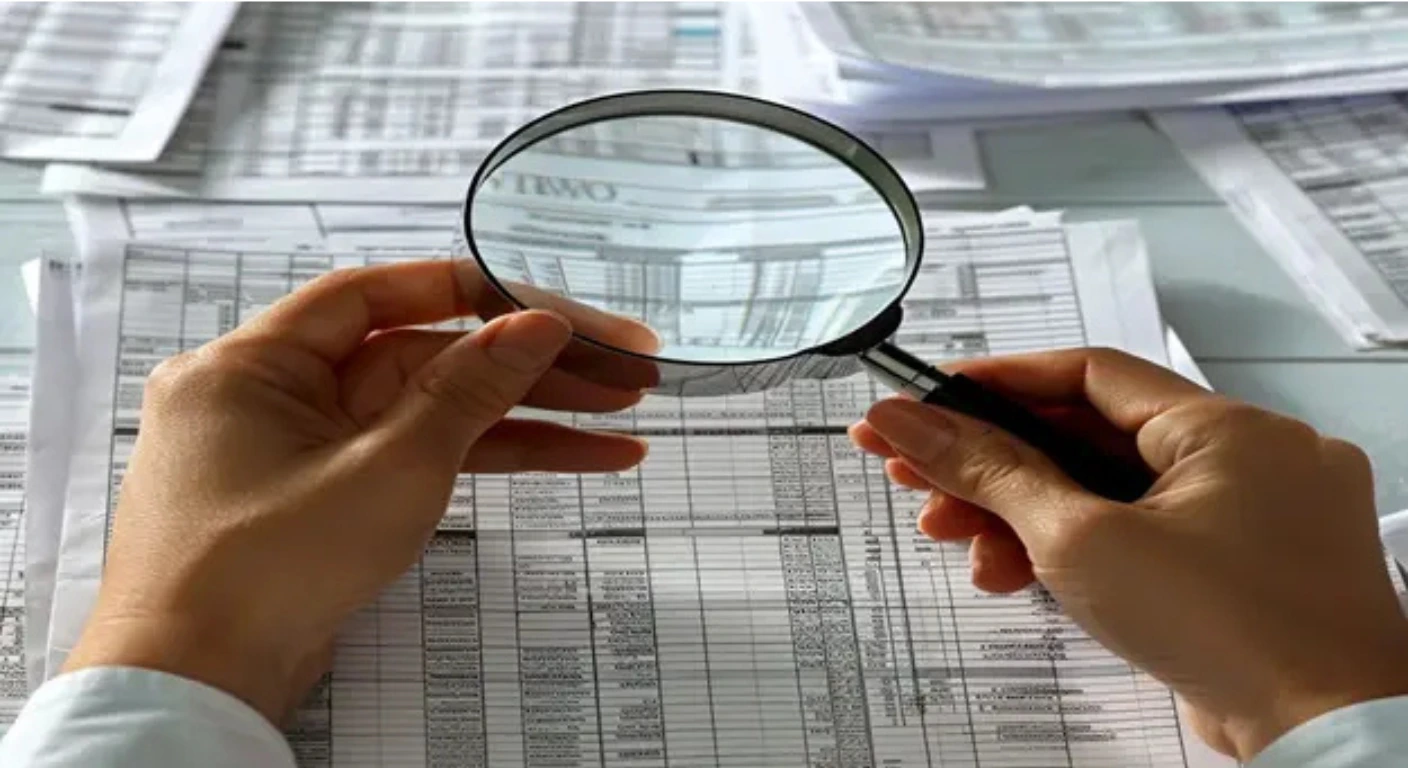By NexGen Support Team
December 19, 2024

Understanding liabilities in the financial accounting world is very important. They help us understand a company’s performance. Financial statements follow certain rules called generally accepted accounting principles, or GAAP. These statements show a company’s current situation, its financial position, and cash flow. Liabilities play a huge role in these statements. They show us what a company owes, such as loans and debts. When interested people review these details, they can see how these debts may affect the company’s liquidity and overall financial health.
Classifying current liabilities and non-current liabilities is important. It helps investors, creditors, and managers make better choices about financial risks and resource use. This information also supports business plans. It is key to know the liability classification. These include accrued liabilities, accounts payable, long-term liabilities, and contingent liabilities. Knowing these types helps us understand a company’s financial health more clearly.
Liabilities in financial accounting are important for investors, creditors, and managers. They show the financial risks a company deals with and what it needs to pay back. They cover daily costs and support growth. Many businesses rely on debts like bank loans. These loans can assist them in purchasing equipment, investing in stock, or expanding their services. By looking at a company’s obligations, you can understand how strong it is financially. This information helps you know how well the company can manage its current payments and how secure it may be in the future. Let’s dive deeper into the liabilities meaning in accounting and explore their significance.
A liability in financial accounting is a kind of debt, the money a business must pay later. A debt shows how much the firm owes to others. These obligations of the business come from what happened in the past. To pay these debts, the business will use its assets, typically cash, to clear this debt at a future date. Here are some common liabilities examples.
In both situations, the company needs money to pay its bills. This means it has to use its resources to handle these payments later.
To find liabilities, check your company’s balance sheet, one of the financial statements. It’s has three sections: assets (what you own), equity (what you and investors have invested), and liabilities (what you owe).
Here’s an example of a traditional two-column balance sheet:
| Assets | Liabilities & Equity |
|---|---|
| Cash: $5,000 | Accounts payable: $3,000 |
| Equipment: $10,000 | Bonds: $8,000 |
| Inventory: $8,000 | Equity: $12,000 |
| Total Assets: $23,000 | Total Liabilities & Equity: $23,000 |
Assets = Liabilities + Equity
Traditionally, balance sheets use a two-column format, but modern accounting software often streamlines this into a single-column layout for easier analysis. Liabilities are categorized into:
Keeping your balance sheet updated with accounting software ensures accurate liability tracking, enabling better financial decisions and strategic planning

Classification of liabilities on a balance sheet: current vs. non-current obligations
There are two main types of financial liabilities: current and non-current liabilities. Here’s a table to explain these two categories of liabilities in financial accounting
| Type | Definition | Examples | Payment Period |
|---|---|---|---|
| Current Liabilities | Debts that need to be paid within a year. | Accounts payable, salaries payable, short-term debt | Within one year |
| Long Term Liabilities | Debts that are due after more than one year. | Long-term debt, bonds payable, pension payables | Greater than 12 months |
By keeping an eye on both current and noncurrent obligations, businesses can manage their money needs in the short term and long term.
Understanding the differences between these types is important. It helps us see if a business is doing well with its money. Liquidity is how good a company is at paying its debts on time. This information shows us how well a business manages its finances.
Current liabilities are the debts that a company has to pay within the next 12 months. They show what the company owes and what it needs to pay soon.
Some examples of current debts include accounts payable. This is the money we owe suppliers for goods or services. Other examples are short-term loans and expenses we need to pay, like salaries, mortgage payables, income taxes, notes payable within a year and rent. Unearned revenue is another current liability. This is the money we receive for services we will provide in the future. Lastly, there are current maturities of long-term debt. This refers to the part of long-term debt that we need to pay back within a year.
Managing current obligations is very important for a business. It helps them maintain a strong liquidity position. This means they have enough cash or liquid assets available when needed. When companies handle this well, they can pay their bills on time. This practice helps them stay financially stable.
Long-term liabilities, known as non-current liabilities, are debts that a company must repay over a long time. These debts are not payable within one year. They last for more than one year. This shows that long-term obligations are the financial duties a company will handle later.
Common types of long-term debt are bank loans, mortgages, bonds, capital leases, pension debts, and deferred tax debts. Many people take bank loans to buy big items. These items can be machinery or property. Mortgages are also important because they help people buy homes.
Other examples of long-term liabilities include bonds payable. They are money that a company takes from investors to get the funds it needs. Pension obligations mean money saved for retirement benefits. Deferred tax liabilities are taxes the company will have to pay later. A business must manage these long-term debts to stay financially strong. A company can meet its financial needs by watching these debts carefully over time.
Contingent liabilities are debts that might happen in the future because of uncertain events. We do not count them as actual debts on the balance sheet. This is because we cannot know when they will happen or how much money they might cost. But, if it looks likely that they will occur and we can guess the costs, we include them in the footnotes of the financial statements.
Some common contingent obligations are product warranties, pending lawsuits, and regulatory risks. For instance, with product warranties, a company must fix or change items if customers think there are issues. Lawsuits can lead to costs if the company needs to pay damages. Additionally, regulatory investigations may result in fines, which add to the company’s financial responsibilities.
Contingent debts can impact a company’s finances if they become actual debts. That’s why businesses must monitor and manage these potential debts. They should work on lowering risks and be ready for these obligations in case they turn into real responsibilities later.
To understand liabilities better, let’s look at some real business examples. These examples will help us learn about the types of liabilities. We see how they affect businesses in different ways.
Accounts payable: A furniture store receives a $10,000 bill from a supplier. This bill is for the sofas they just bought. Since the store hasn’t paid this bill yet, it appears as accounts payable. Typically, this bill should be paid within 30 to 90 days.
A small business owner takes a short-term loan of $25,000 from a bank. This loan helps them keep cash flowing when things are busy. They have to pay back the loan in six months.
Accrued Expenses: A company might use services like utilities during the month but not receive the bill right away. The money that needs to be paid for these services is known as an accrued liability. Even though the company has already used the services, it still needs to pay for them. This shows that the company keeps a good watch on its expenses, even when it pays later.
A mortgage is a type of loan. A person or a business takes it to buy property, like a house or an office. When this happens, it creates a long-term debt. They must pay it back over time.
Bonds Payable: A company can sell bonds to raise money for growth. Each bond has a fixed interest rate, paid at regular intervals. It takes several years for them to mature. At the end of the bond period, they have to pay back the original amount.
Deferred Tax Liabilities: A company may choose quick depreciation to lower its taxes. This decision can lead to a gap between taxable income and the income shown in its financial statements. Because of this gap, the company might have deferred tax liabilities. This means they will pay taxes later when the accounting differences are fixed.
Liabilities become simpler to understand when we look at them alongside assets. Assets are valuable items a company owns. Liabilities are what the company owes to other people or businesses. It’s crucial to recognize the link between assets and liabilities in financial accounting. This connection helps us understand a company’s financial health better.
Assets can help the company earn money in the future. Liabilities are the expenses the company must pay. These usually include its debts. When people examine a company’s assets and liabilities in balance sheet, they can see how strong and stable its finances are
Here’s a table to explain the key differences between assets and liabilities in financial accounting:
| Category | Assets | Liabilities |
|---|---|---|
| Definition | Items a company owns that can generate future income. | Money a company owes, which must be paid back. |
| Types | Tangible and intangible assets. | Current and non-current liabilities. |
| Examples | Property, equipment, inventory (tangible); patents, copyrights, goodwill (intangible). | Bank loans, money owed to others, unpaid services. |
| Impact on Business | Can increase the value of the company. | Poor management can decrease company value. |
| Purpose | To generate income and support growth. | To be paid off using the company’s resources. |
It is important for businesses to pay attention to both of these financial aspects.
The health of your business relies heavily on how you manage your resources and debts. It’s essential to keep a good balance between your assets and debts. A balanced approach is key for your financial stability and growth.
Owner’s equity shows how much money you have left after you pay your debts. It reflects the performance of your business. If your total assets exceed your total debts, your owner’s equity is positive. A positive owner’s equity indicates that your business is managing its money well.
If your business owes more money than it owns, it has negative equity. This can hurt your business over time. To have a good business, you need to manage this balance carefully.

Balancing assets and liabilities in accounting using financial ratios to assess a company's financial health and risk
Calculating liabilities requires adding up all the debts and obligations in your ledger. Note that the accounting equation should balance to ensure there are no mistakes. Using accounting software can make this work easier. However, learning some simple formulas for important liability ratios can provide you with helpful information.
These ratios are key for people who invest, lend, or look at companies. They show the risks of a company’s debts and how it handles its money. Now, let’s look at some important calculations for these key ratios, how each ratio works, and what it indicates about a company’s financial health.
| Ratio | Calculation | Interpretation | Financial Risk |
|---|---|---|---|
| Debt Ratio | Total Liabilities ÷ Total Assets | Shows the portion of assets covered by debt. |
|
| Long-Term Debt Ratio | Long-Term Liabilities ÷ Total Equity | Shows the proportion of long-term debt to total equity. |
|
| Total Debt to Capital Ratio | Total Debt ÷ (Total Debt + Shareholder Equity) | Shows how much a company relies on borrowed money versus equity. |
|
In business finance, understanding how debt impacts your operations is vital. Debt ratios are the backbone of credit accounting, offering a clear picture of your company’s financial health. These ratios assess how much of your business is financed by debt versus assets or equity, and they are often the first thing lenders or investors analyze.
The debt ratio evaluates the extent of a company’s leverage by comparing total liabilities to total assets. Here’s the formula:
Debt Ratio = Total Liabilities ÷ Total Assets
Let’s consider Green Valley Garden Supplies. From its balance sheet, the company reports $10,000 in total liabilities and $50,000 in total assets:
Debt Ratio = $10,000 ÷ $50,000 = 20%
Debt ratios vary by industry. For example:
The long-term debt ratio focuses on the company’s long-term financial obligations, excluding current liabilities. It’s a measure of how much of the company’s assets are financed by long-term debt.
Long-Term Debt Ratio = Long-Term Liabilities ÷ Total Assets
Imagine Urban Architecture Firm has $15,000 in long-term liabilities and $75,000 in total assets:
Long-Term Debt Ratio = $15,000 ÷ $75,000 = 20%
A 20% long-term debt ratio indicates that a small portion of the company’s assets rely on long-term borrowing. Ideally, this number should decrease over time, showing a reliance on operational profits rather than ongoing borrowing. An increasing ratio, however, may hint at overdependence on debt for expansion
The debt-to-capital ratio measures how much of your company’s total financing comes from debt versus equity. It’s particularly useful when comparing businesses within the same industry.
Debt-to-Capital Ratio = Total Liabilities ÷ (Total Liabilities + Total Equity)
Consider Sunshine Craft Supplies. The company has $12,000 in liabilities and $36,000 in equity:
Debt-to-Capital Ratio = $12,000 ÷ ($12,000 + $36,000)
Debt-to-Capital Ratio = $12,000 ÷ $48,000 = 25%
Debt ratios are crucial when selling or acquiring a business. Buyers scrutinize these figures to determine the company’s financial risk and growth potential. A lower debt-to-capital ratio makes your business more attractive, signaling stable financial management.
For example, if Blue Ocean Fisheries plans to sell, potential buyers will likely evaluate its debt-to-capital ratio alongside revenue trends. If the ratio is below 40%, buyers may view it as a well-managed, low-risk investment.
Managing business debt doesn’t have to be overwhelming. It’s about finding the right balance—using debt to fuel growth without letting it hold your business back. Here are practical tips to keep your finances healthy:
Effective debt management is more than just reducing what you owe—it’s about building a stable, resilient financial future for your business. Take these steps, and you’ll be well on your way to achieving lasting success.
Keeping debt ratios within industry norms ensures financial stability and boosts your credibility with stakeholders. For instance:
Calculating liabilities with debt ratios shows how much debt a company has. It is important to identify these debts correctly. This practice helps businesses make smart decisions and remain strong.
Understanding liabilities in financial accounting is important. They help us understand how a business is doing with its money. There are different types of liabilities. These are current, long-term obligations, and contingent liabilities. Each type matters in financial accounting. By checking both assets and debts, businesses can see their financial situation more clearly. ‘
Debt is an inevitable part of growing a business, but how you manage it defines your success. By monitoring debt ratios regularly and taking steps to reduce liabilities, you can maintain a strong financial position and foster sustainable growth. Always use these metrics as a guide to make informed financial decisions and ensure your business remains an attractive opportunity for investors, lenders, or future buyers.
Calculating liabilities with debt ratios shows how much debt a company has. It is important to identify these debts correctly. This practice helps businesses make smart decisions and remain strong.
At NexGen Taxes, we understand the importance of managing liabilities in financial accounting. Our team of experts specializes in analyzing debt ratios and providing insights to help businesses make informed decisions. Through our tailored services, we can assist in identifying and managing different types of liabilities, ensuring your financial health remains strong.
Our expertise extends to offering guidance on accounting and bookkeeping. By partnering with NexGen Taxes, businesses can gain a comprehensive understanding of their financial situation and implement strategies for sustainable growth.
© 2024 NexGen Unlimited, LLC